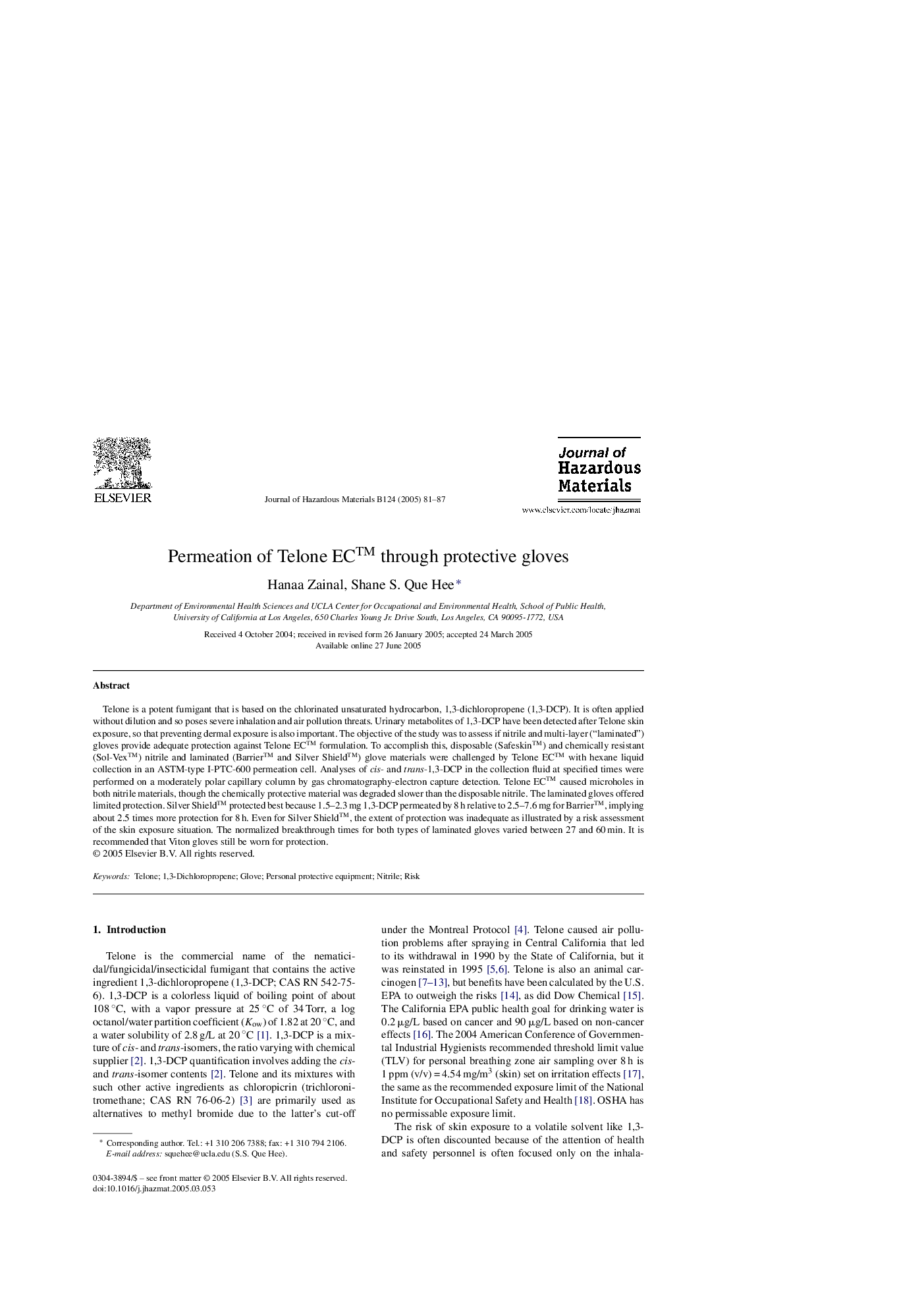| Article ID | Journal | Published Year | Pages | File Type |
|---|---|---|---|---|
| 9674163 | Journal of Hazardous Materials | 2005 | 7 Pages |
Abstract
Telone is a potent fumigant that is based on the chlorinated unsaturated hydrocarbon, 1,3-dichloropropene (1,3-DCP). It is often applied without dilution and so poses severe inhalation and air pollution threats. Urinary metabolites of 1,3-DCP have been detected after Telone skin exposure, so that preventing dermal exposure is also important. The objective of the study was to assess if nitrile and multi-layer (“laminated”) gloves provide adequate protection against Telone EC⢠formulation. To accomplish this, disposable (Safeskinâ¢) and chemically resistant (Sol-Vexâ¢) nitrile and laminated (Barrier⢠and Silver Shieldâ¢) glove materials were challenged by Telone EC⢠with hexane liquid collection in an ASTM-type I-PTC-600 permeation cell. Analyses of cis- and trans-1,3-DCP in the collection fluid at specified times were performed on a moderately polar capillary column by gas chromatography-electron capture detection. Telone EC⢠caused microholes in both nitrile materials, though the chemically protective material was degraded slower than the disposable nitrile. The laminated gloves offered limited protection. Silver Shield⢠protected best because 1.5-2.3 mg 1,3-DCP permeated by 8 h relative to 2.5-7.6 mg for Barrierâ¢, implying about 2.5 times more protection for 8 h. Even for Silver Shieldâ¢, the extent of protection was inadequate as illustrated by a risk assessment of the skin exposure situation. The normalized breakthrough times for both types of laminated gloves varied between 27 and 60 min. It is recommended that Viton gloves still be worn for protection.
Related Topics
Physical Sciences and Engineering
Chemical Engineering
Chemical Health and Safety
Authors
Hanaa Zainal, Shane S. Que Hee,
